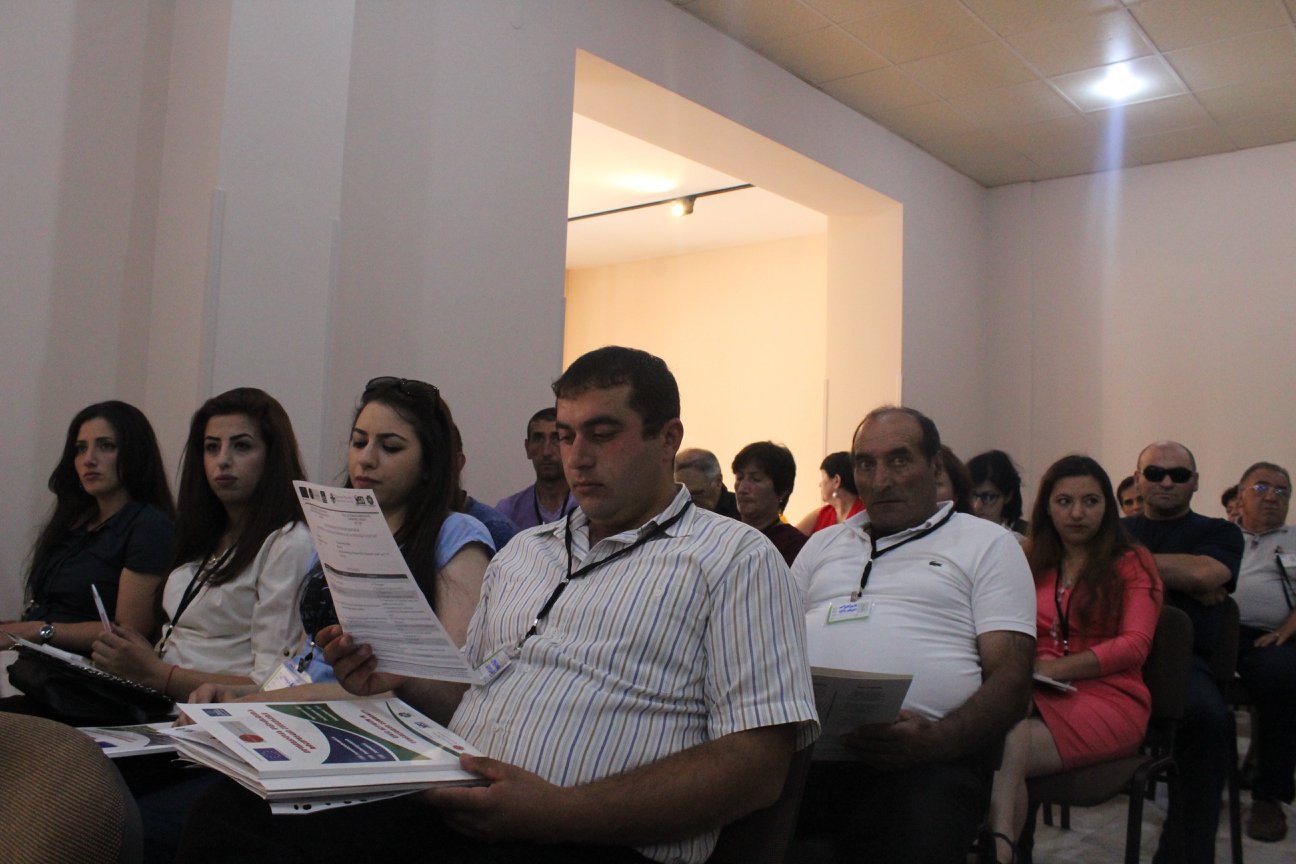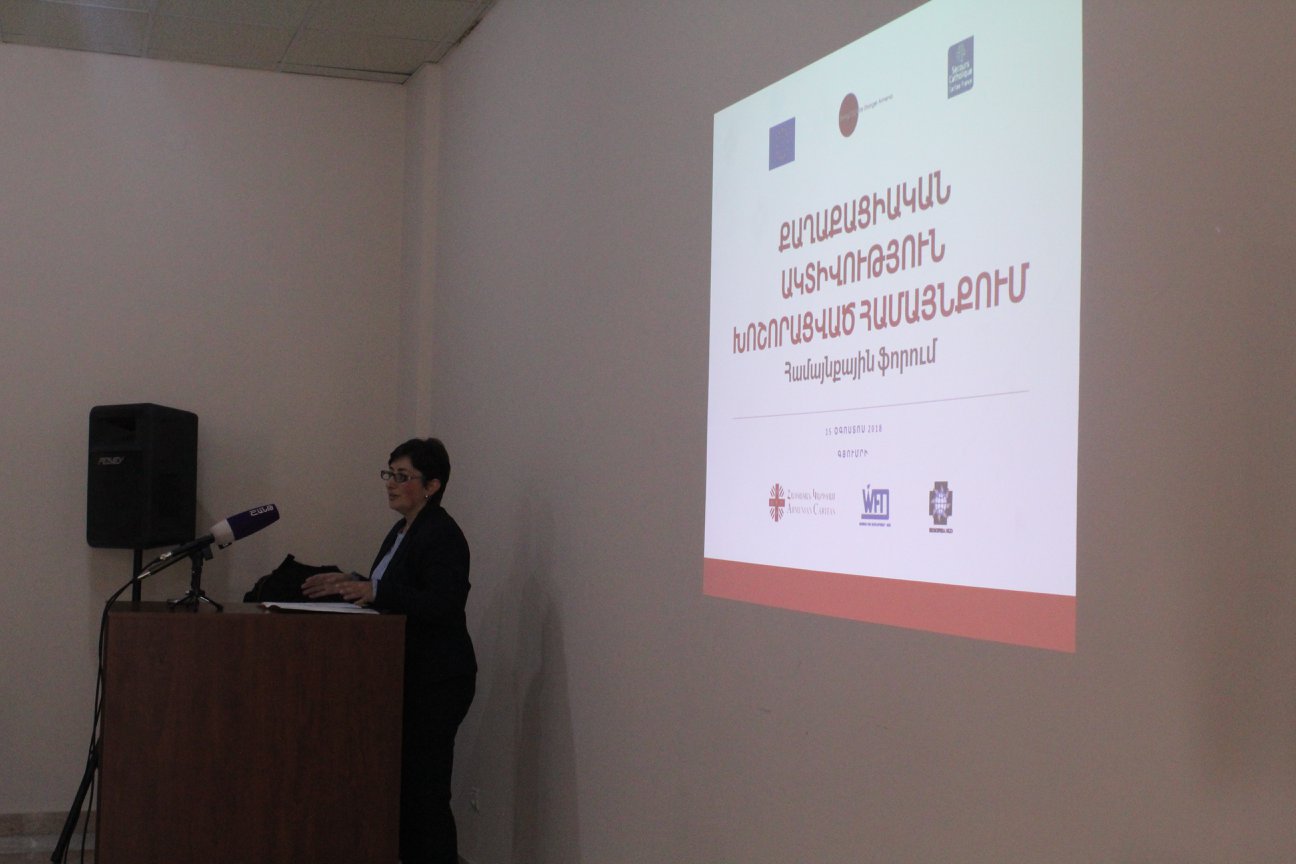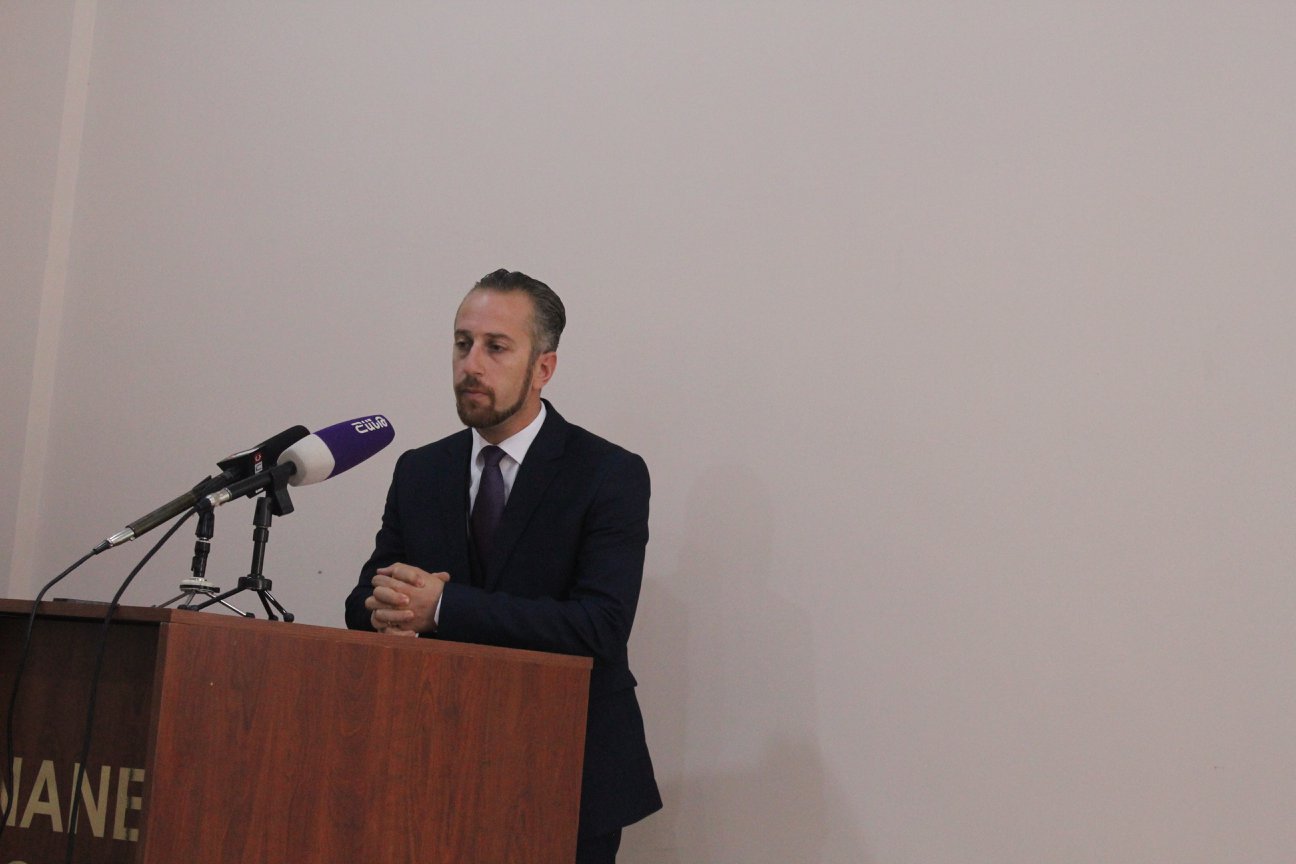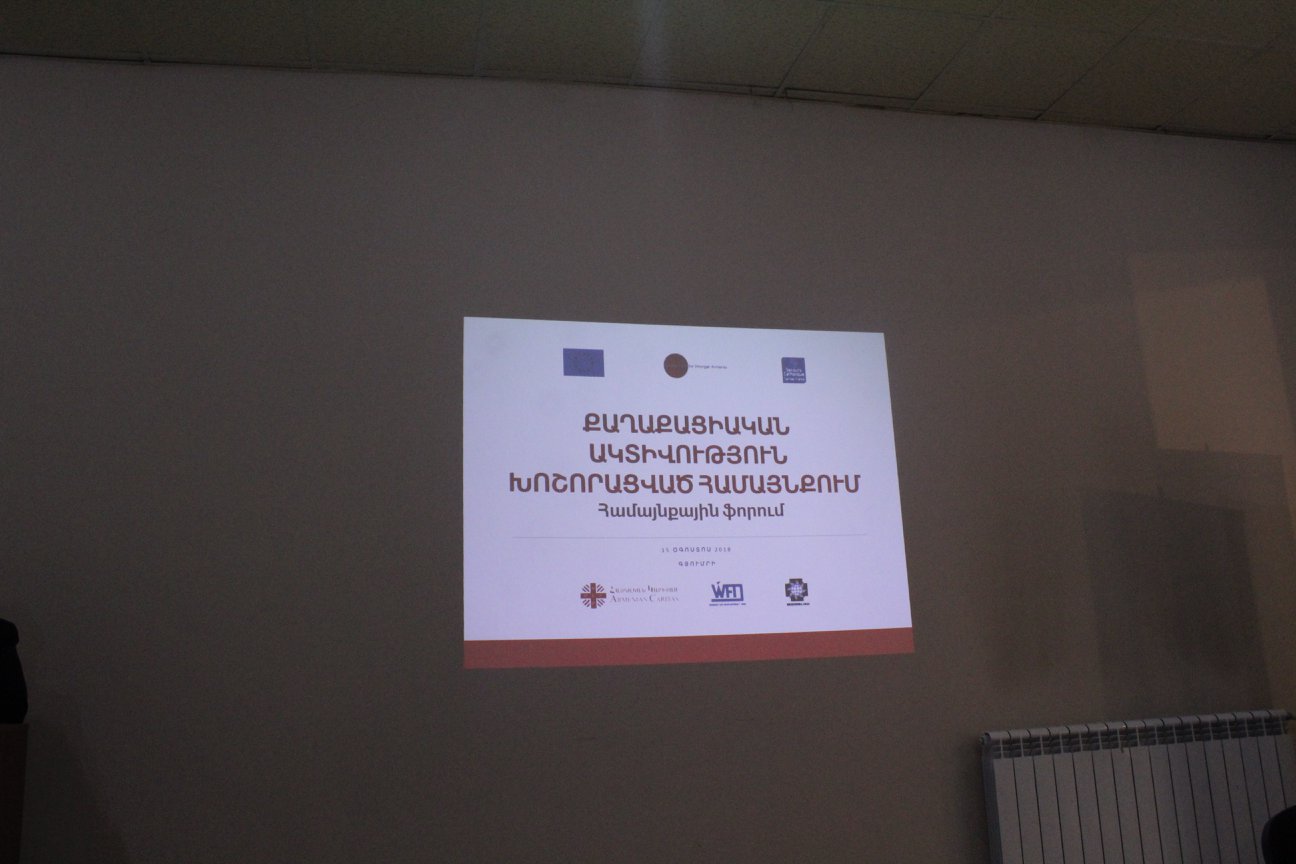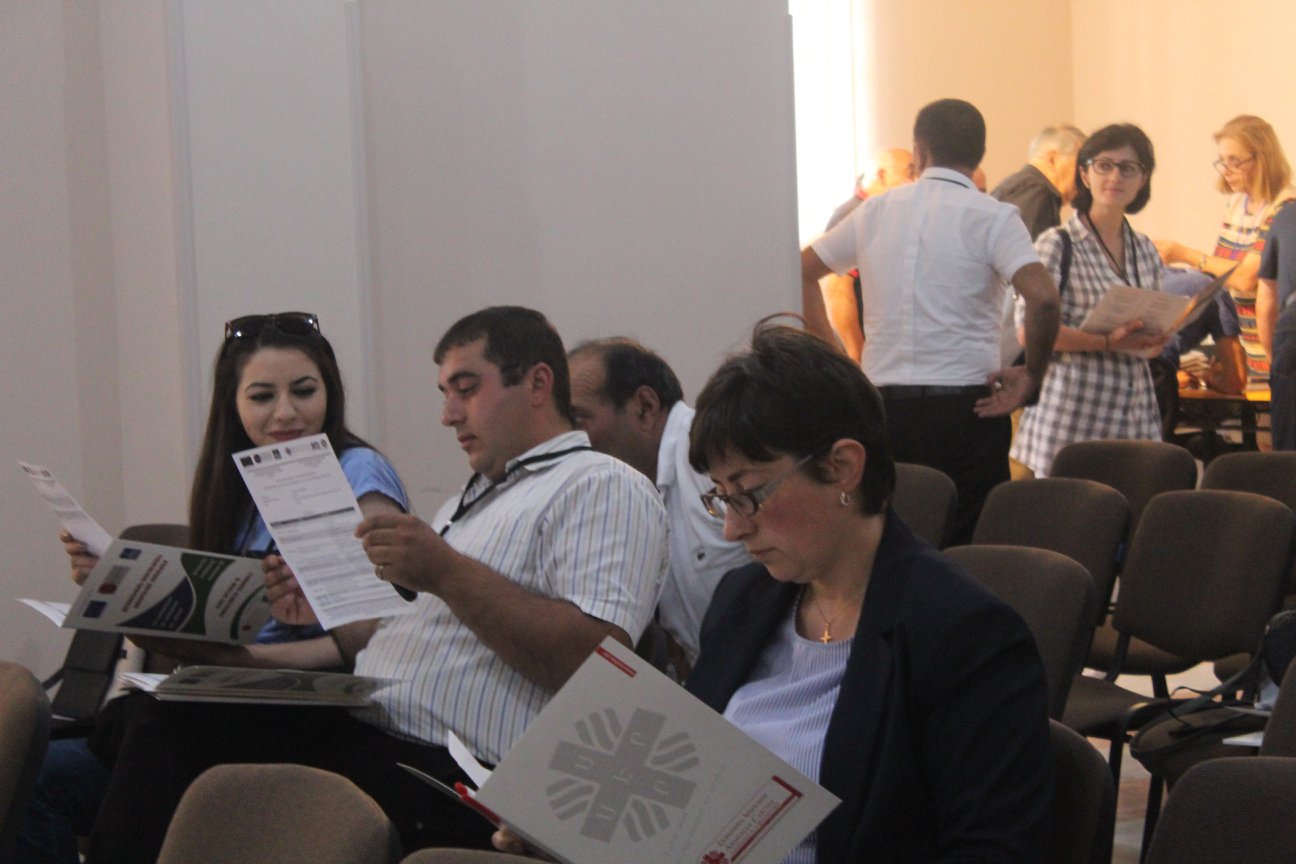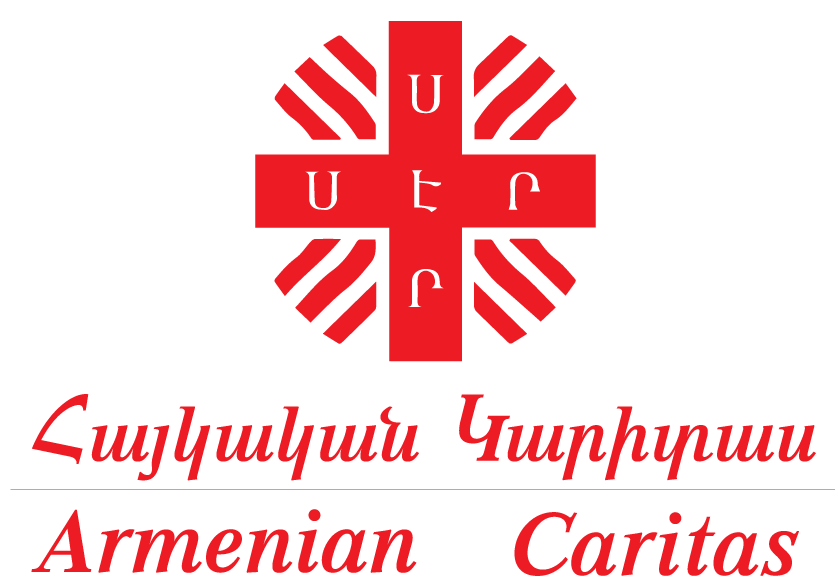On August 15, Gyumri hosted the forum “Sarapat Consolidated Community: development opportunities and challenges” in the scope of the project “Civic Activism in Consolidated Community”. The “Civic Activism in Consolidated Community” project falls within the scope of the “Support to Capacity Building of Armenian Civil Society Organizations” (Strong CSOs) Project of the EU-funded Small Grants Program. Implemented by the consortium of Armenian Caritas BNGO, Women for Development NGO and Biosophia NGO, the “Civic Activism” project is co-funded by Caritas France.
In addition to the representatives of regional authorities and partner organizations, the residents of the consolidated communities were also present. On the example of Sarapat community, the problems of consolidated communities and work implemented after the consolidation was presented to the forum. Since 2011, the Community Consolidation Program has been implemented in the republic as a process aimed at developing economically strong and financially sustainable communities through community unification. However, in most cases, the population of consolidated communities has a passive, sometimes severe negative attitude toward the processes of consolidation. Under the new management system reforms, there is a need to raise the awareness of the population of the consolidated communities on the made changes , to start a continuous public dialogue between decision-makers and civil society representatives at the local level to promote civic activism and develop their potential and skills for public participation, management, and advocacy. Since October 2017, “Armenian Caritas” Benevolent NGO has started a project called “Civic Activism in the Consolidated Community” in partnership with “Women for Development” and “Biosphere” NGOs, whose overall goal is to promote civic activism in the consolidated communities.
In her welcome speech Anahit Gevorgyan, the Program Manager of Armenian Caritas said:
“These consolidations were somehow imposed on communities without paying attention to a number of issues including governance. Let’s hope that the project implemented by the three organizations has somehow decreased the problems that arose as a result of the consolidation in Sarapat community”.
Highlighting the importance of the social sphere, the Deputy Governor of Shirak region Ara Melikjanyan said:
“The community consolidation process had a negative side. The program was discussed with communities, but the attitudes of the communities were not taken into account. This is a negative process, and to some extent, the reason for the negative response from the communities is this. I can also say that the consolidation of communities is a dynamic and continuous process. We have also achieved the success and they are still being recorded. In this sense, I can mark the improvement of the Local Government system, especially in the case of rural communities. Here we had competitive Local Authorities”:
An analytical document has been developed within the scope of the project, which presents a situational assessment of 15 settlements in the Sarapat consolidated community of Shirak region as well as the analysis of social and economic development opportunities. The analysis focuses on identifying opportunities and feasibility of organizing agricultural and entrepreneurial production through the assessment of human and material-technical potential of 15 residential areas of Sarapat consolidated community(Goghovit, Tsoghamark, Dzorashen, Bashghygh, Kakavasar, Small Sariar, Sarapat, Douglas, Arpeni, Hartashen, Vardaghbyur, Salut, Musayelyan, Torosgyugh, Lernagyugh) and developing Sarapat Community Sector Development Action Plan on the example of rural tourism. Within the scope of the work, the situation has been assessed from the perspective of resources in the villages of Sarapat community – agriculture, entrepreneurship, energy, water resources, infrastructure and so on. The initiators of the project mentioned that community issues were identified and classified by priorities through the participatory principle during community meetings. The main ways of solution and recommendations on the possible development directions were identified. A strategy for development priorities and an example of a three-year (2018-2021) and a ten-year plan of action for selected industry development was formed based on the gathered information, which should be discussed with the active groups of all villages in the community and the Local Authorities. The expert research process covers all settlements in the Sarapat community.
Presenting the final stage of the project, Hamlet Ghazaryan, the director of “Biosophia” organization said:
“It is necessary to demonstrate a multidimensional scientific approach for the rural tourism to play an important role in meeting the increasing economic and social needs of the region, where the activities of experts in the field of tourism, history, and culture, traditional agriculture, biologists, engineers, as well as some sports, regenerated energy and other experts in the field of tourism should be included. As a supplement to the implementation of highly efficient tourism services, it is necessary to improve the protection and care of all bioresources.
Basic research is necessary to improve all tourism infrastructure, including advertisement, dissemination of information, the whole chain of service delivery and consumption, so that tourism development is as stable as possible”:
